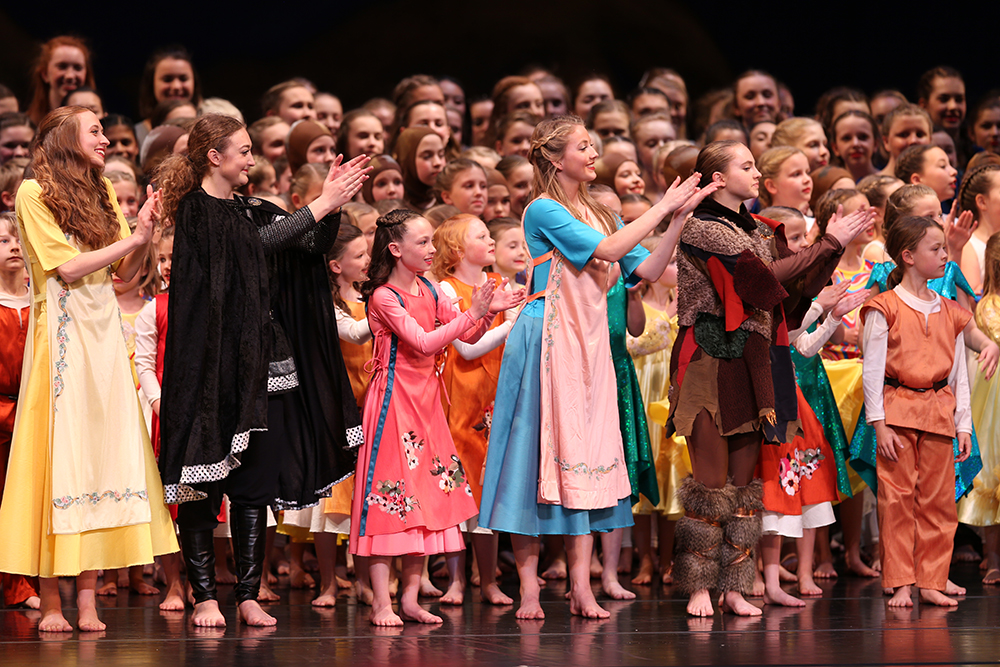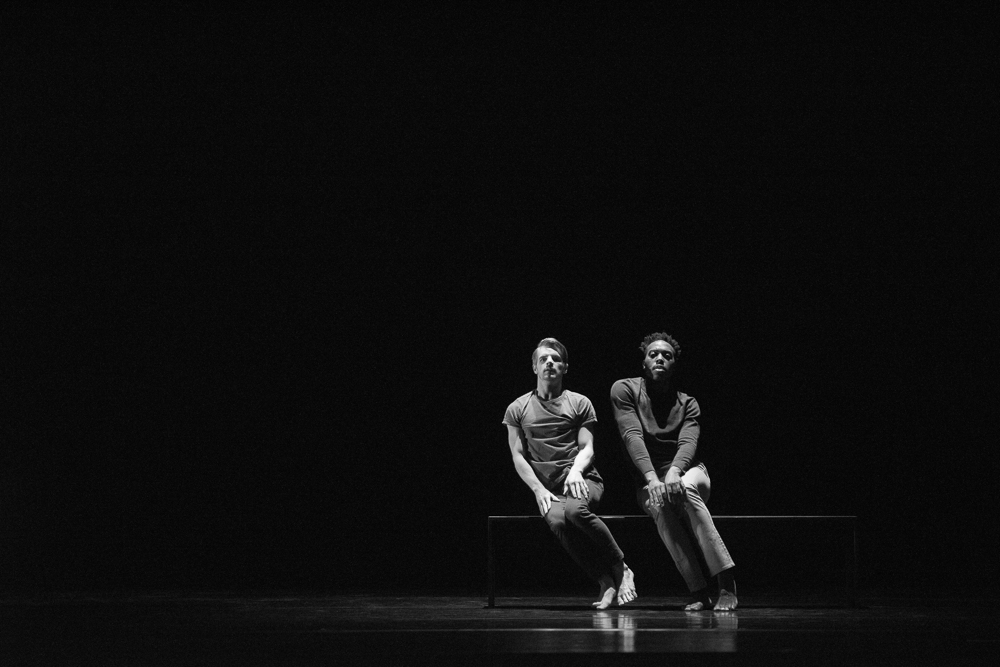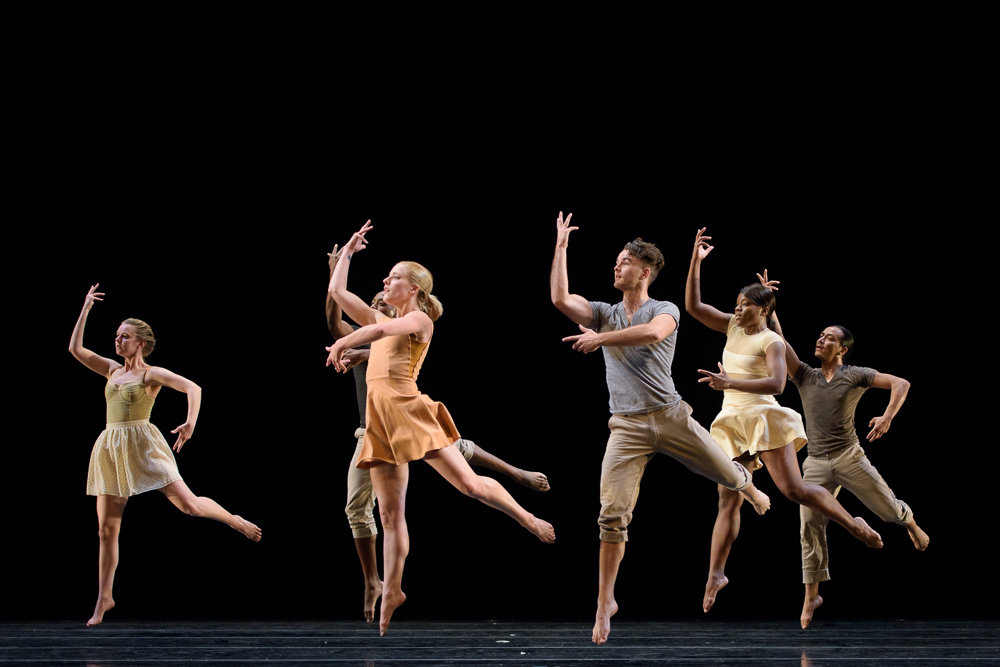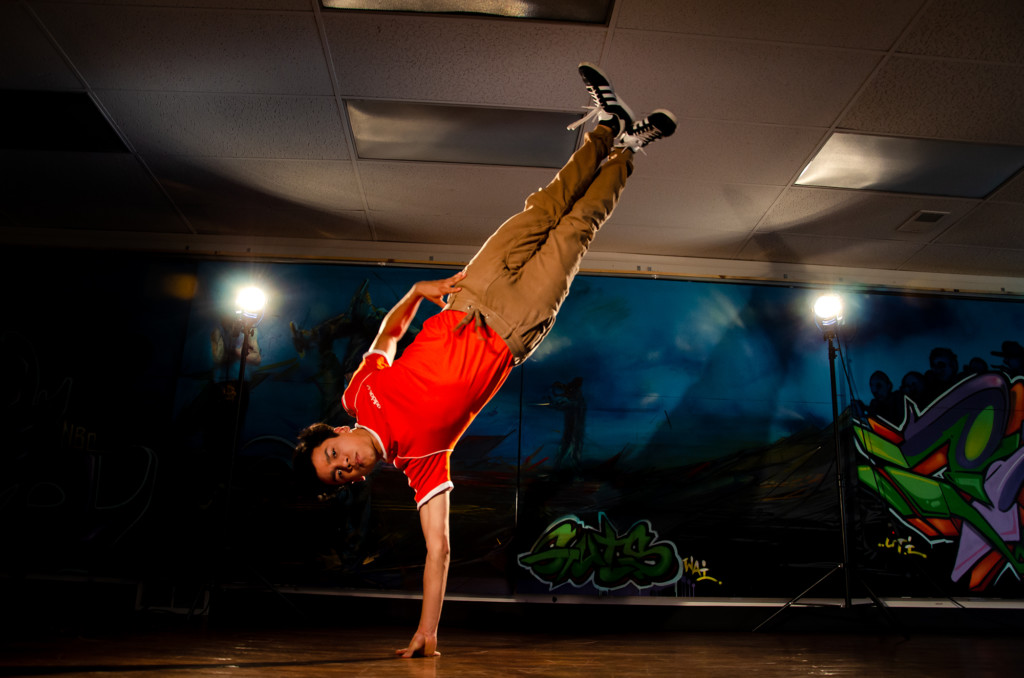Dance has a monumental presence at this year’s Utah Arts Festival. There are the daily performances of BANDALOOP, the phenomenal vertical dance company from Oakland, California; a June 22 performance of RUUDDANCES featuring Ballet West and Ballet West Academy performers who will present classic and contemporary ballet works including the festival’s dance commission by Peggy Dolkas, and The Spirit of Dance: Photographs by Marc Santos exhibition in the City Library.
In addition, there are four performances scheduled by some of Utah’s most influential, historic and dynamic institutions: Repertory Dance Theatre, Children’s Dance Theatre of The University of Utah Tanner Dance, SALT Contemporary Dance and The Bboy Federation.
Each of the four performances is previewed:

Children’s Dance Theatre (June 23, 5:30 p.m., Festival Stage)
Each year, the Children’s Dance Theatre of The University of Utah’s Tanner Dance, one of the area’s longest running dance institutions, presents an original show, impressive in numbers of performers, fresh adaptations of classic stories with choreography and original music that delight festival audiences. This year, The Magic Lake is based on an Andean folktale from South America about a young shepherd who tends to llamas but then decides to go on a journey to find a cure for the ailing daughter of the emperor. Chaska is guided by many animals – condors, pink dolphins and macaws, for example, as she tries to locate a dreamland where a stolen lake contains the therapeutic waters that will heal her friend.
Julie Hewkin and Tristan Moore adapted the tale from a Peruvian legend chronicling the ancient god Wiracocha who created the lake but then takes revenge on a greedy sorcerer who tried to steal the lake. Many years later, at a winter solstice celebration (Inti Raymi), a strange visitor gives a gift to the emperor which turns out to be a box of disease-spreading black butterflies. The young princess then falls ill and it is then that this young girl shepherd seeks out the land to gather the healing waters so that the princess can recover.
As Mary Ann Lee, director, notes in a written message, “Chaska’s attributes are those we wish for all of our young people, and we all need mentors to help us on our paths.” Many of the group’s dancers have performed consistently from the age of three until 18. As Lee explains, “We hope the studio is a sanctuary where we invent, share, discuss, perfect, and celebrate dances that communicate who we are.”
The work was presented for the first time in performances last March at the Janet Quinney Lawson Capitol Theatre. The group’s performances are supported by an appropriation from the Utah State Legislature through the Utah State Office of Education’s Professional Outreach Program to Schools and are free to schools.

SALT Contemporary Dance (June 23, 7 p.m, Festival Stage)
The youngest of Utah’s contemporary dance companies, SALT Contemporary Dance just marked its 5th anniversary season and its artistic presence has grown significantly. The company’s mission was based on the model of The Northwest Dance Project, which has premiered nearly 200 works from choreographers representing many locations around the world.
Likewise, SALT, led by artistic director Michelle Nielsen, has premiered plenty of new work and its forthcoming appearance at the Utah Arts Festival will include recent dance compositions from its expanding repertoire. “Whatever is developing in the global world of dance,” Nielsen says, “is where we want to be at the front of it.”
The opening work for its festival performance will be Paper Cut, choreographed by Peter Chu and featuring three dances. Described by Nielsen as “beautiful symbolism” emanating from the metaphor of paperback books, the work emphasizes the vulnerabilities and fragility of character, as emotions ripple through the space in which we interact with each other. It is a work emphasizing that even in the contentious times that divide us, we still need to think about how we sustain our human decency and connections to each other. Chu, a gymnast-cum-dancer and choreographer, leads chuthis, a Las Vegas-based dance company. The accompanying music was written and produced by Dieff Houle and contains an excerpt from a field recording of the folk song Shortenin’ Bread, written by Ofra Dell Graham.
The company will present an excerpt of Stand By Me, choreographed by Gustavo Ramirez Sansano and featuring music by Emily Adams, Hammock, and Port Ricks remixed by TAR@JMB. Featuring five dancers, the work riffs initially off a popular Spanish party game in which two people roll an orange between their bodies. At one point, the orange drops abruptly to the floor and the individuals separate. Filled with gestures that accentuate the meaning of the movement, the work reflects artistically on why we sincerely seek out companions and friends that complete our lives.

The third work is Beyond the Limitation, which was premiered last fall and was choreographed by Joni McDonald and dancers from the company. The work, featuring three dancers, comprises a solo and duet that takes place simultaneously – the effect resembling an intimate chamber music trio. Exemplifying movements from ballet and contemporary dance techniques, the work, as Nielsen explains, is reminiscent of the romantic beauty that long has been a part of classical ballet technique as well as its potential in contemporary dance movement. The accompanying music is an ambient score produced by Keaton Henson. Nielsen included a program note featuring a quote from Frank A. Clark, a lawyer who eventually served for two decades in the U.S. House of Representatives from Florida in the early 20th century: “If you can find a path with no obstacles, it probably doesn’t lead anywhere.”
The company also will present an excerpt from Will the Statue of Your Beauty Walk?, a work featuring four dancers and choreographed by Brendan Duggan in collaboration with the dancers. It includes music from numerous sources: William Basinski, Deru, Tim Hecker, and Machinefabriek. The work amplifies the visuals of being self-conscious about our appearances and how others respond to those images and presentations.

Following will be Proverb, with choreography by Banning Bouldin featuring seven dancers and music by composers who are particularly well suited to the artistic requirements of contemporary dance: Olafur Arnalds, Nils Frahm and Brian Eno. The work’s creative genesis arose from the choreographer’s intention of inflecting contemporary dance language with a new dialect. Bouldin asked each dancer to write three sentences on perceptions of regret and redemption but instructed them to keep it private. As Bouldin explained in the program note, “Using these writings as source material, I directed each dancer through a series of rule games to translate their written words into a physical ‘sign language’.” Carrying the abstract appearance to its full thematic potential, the dancers wore black skirts that, as choreographic elements, signified the burdens weighing down our bodies throughout our lives and served to relate the theme in accessible ways for the audience’s benefit.
The company also will perform an excerpt from A Particulate History of Friendship, The Trial and Absence of Stillard Mave, a work for five dancers choreographed by Alex Ketley. It was premiered last fall and it emphasizes movement with focus on gestures and clear eye contact not just between the dancers but also with the audience. These are elements that have fortified contemporary dance’s potential as a multidisciplinary theatrical approach. The accompanying music features Emily Adams, Hammock and Porter Ricks, as remixed by TAR@JMB.

Repertory Dance Theatre (June 24, 5:15 p.m., Festival Stage)
The Repertory Dance Theatre’s just completed 52nd season was a monumental tour de force and its upcoming Utah Arts Festival performance will feature several works that were part of it. And, Linda C. Smith, the executive and artistic director, says several works were selected to honor dancers Justin Bass and Lacie Scott, who are leaving the company to pursue new projects.
Among the various dance movement languages the company has explored recently has been Gaga, which encourages dancers to become more naturally aware of their own surroundings and performance spaces along with acknowledging in how the emotions and reactions of people in those surroundings become handy sources of inspiration. RDT has added several Gaga works to its historic repertoire, including Noa Zuk’s By The Snake (2014). The work was remounted in 2016 and its current rendition has been an audience thrill. It joyously upends the social and gender conventions of couples dancing with an exhilarating score to boot featuring Israeli folk dance. Bass and Scott will perform on this work.

The performance will continue with Sarah Donohue’s Still Life with Flight, a work that the RDT performance will alumna created three years ago and has included prior performances with the company as well as the 2016 American College Dance Association’s National Festival at the Kennedy Center in Washington D.C. As The Utah Review mentioned when the work was performed this spring, Still Life is “often lighthearted, even whimsical … a playful competitive tone between the two dancers as they move on and off a bench that could easily be a plain bus stop. But, one dancer even as he might appear to one-up the other, it never happens.” The work is accompanied by by musical excerpts from various sources including Vivaldi’s Spring from the Four Seasons and local composer Michael Wall, a Salt Lake City DJ and music producer with the website soundFORMovement.com. Dancers will be Efren Corado Garcia and Jaclyn Brown.
The third work comes from last fall’s concert featuring the choreography of William ‘Bill’ Evans, who was among the dancers and choreographers in RDT’s first eight years as a company. Tin-Tal premiered in 1974, which then featured Smith, in the solo role. Evans reconstructed the work for its latest performance. The work commands an impressive display of technical precision that encompasses patterns of movements often realized as triangles, lines and circular arcs along with highly disciplined footwork and stylized gestures and facial expressions. This communicates the effect of the music — the classical dance tradition of southern India (Bharatanatyam) and the tabla music of Pandit Mahapurush Misra, the most deeply revered musician of this genre. So fluid and timeless in its construction, Tin-Tal is pure dance celebration in multilingual terms. The work will feature Bass, Garcia, Scott and Lauren Curley.

Closing out the performance will be Angela Banchero-Kelleher’s Material Tokens of the Freedom of Thought, a visceral, complicated reflection on the relationship the choreographer had with her late mother. Banchero-Kelleher, also an RDT alumna, reset the work, which the company premiered three years ago, for the company’s spring concert. The piece, which has a cinematic and full-blooded feel, is accompanied by the music of Polish composer Wojciech Kilar and Banchero-Kelleher says the title comes from the description René Magritte gave to his paintings such as the 1935 work The Human Condition. In its recent restaging, the work is scored for the company but includes a duet that underscores the turbulent yet genuine loving dynamics of the relationship the choreographer and her mother enjoyed.

Last season, RDT presented the world premiere of Dancing The Bears Ears, choreographed by Zvi Gotheiner, which was, as The Utah Review noted in a review, “destined to be part of the essential canon of artistic works that represent the authentic voices and spirit of the American West.” In the forthcoming season, RDT’s theme will be Manifest Diversity, which Smith says will “really honor the whole spectrum of values found in our rich diverse community.”
This fall, it will present the historical masterpiece Rainbow Round My Shoulder by Donald McKayle as well as the work of Japanese artist Michio Ito, along with commissioned works by Tiffany Rea-Fisher, artistic director of Elisa Monte Dance and local choreographer Natosha Washington. A November concert will include guest dancers from various community groups and a spring program will present historic masterpieces along with a Gaga work and two new commissioned pieces.

The Bboy Federation (June 21-23, nightly, 6-7 p.m.; June 24, 7:30 p.m., The Round)
Joshua ‘Text’ Perkins remembers when he and his buddies (including James ‘Pyro’ Karren) would dance outside the gates of the Utah Arts Festival on Library Square, hoping to attract the attention of festivalgoers and even get tickets to enter. That was more than 10 years ago.
In 2009, The Bboy Federation was established with Perkins as chief executive director and this year, the organization featuring dancers at all levels of skill and DJs will make its eighth consecutive appearance at the festival. Indeed, the Federation is a major anchor for the events at The Round and its nightly competitions and performances draw crowds that often overflow the space near the stage.

The hip hop community and Bboy music and dance culture scene in Salt Lake City has flourished because of the Federation’s presence. It continues the 3 v. 3 Bboy League, the bread and butter program that propelled its visibility but it also has expanded into workshops, art shows, performances at high-profile events including Salt Lake Comic-Con and classes as well as after school programs that have served South Salt Lake and numerous outlets. It has collaborated with many organizations, including the branches of the Salt Lake City Public Library System and its Hip Hop Education and Resource Center has become a mainstay in curating developments in hip hop culture for access to all local groups in the community. Most importantly, it has empowered young people to use the organization’s activity as motivation for their education and for their personal development.
Festival audiences appreciate the informative context the group brings to its performances. “Over the four days, we share a bit about the history of the break dance and its role in the background of hip hop, the elements that go into dancing and, of course, the music and the history of DJs,” Perkins explains. Thursday’s performance is much like a warmup for the battles that will continue through the weekend. On Friday, performers 14 and under take the stage. Saturday’s performance brings the adult in two-person crew teams, of which there will be eight. Sunday will feature open style 3 v. 3 battles. Among the local DJs will be SkratchMo and LampShady for the Thursday’s hands-on performance and background.

The biggest twist this year for the competition is the appearance of the Las Vegas-based Zoologic Training Camp, the most prominent outlet for Bboy and Bgirl dance in Nevada. They will compete with their young peers from the Federation, with judges Tarzan, Chacho and Bangkok. On Sunday, the open invitationals show will include a performance by Zoologic dancers.
If there is nervousness on the part of young dancers appearing before one of the largest audiences in their formative years, it is transformed into tremendouse energy, Perkins explains. Many of the adult dancers started as young performers, so some have returned yearly to the festival, a great opportunity to see a dancer mature from their middle teens to their middle twenties and demonstrate well-developed technique and spontaneous creativity to respond to the immediate moment of the battle and performance.

